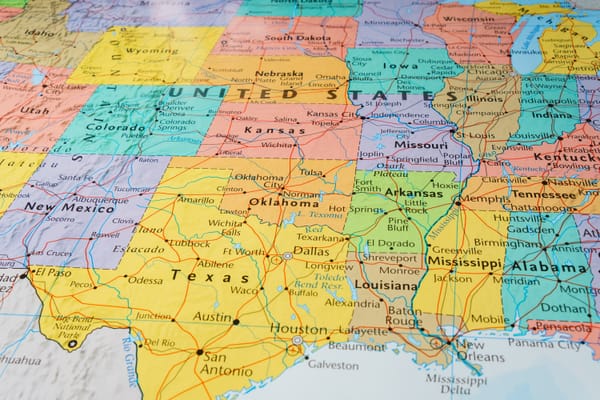Will Airbnb Demand Surge in 2025? What to Expect

As an Airbnb investor, your top priority is finding a market with high ROI. The first step is to understand Airbnb demand in the area where you want to invest in a short-term rental business.
You might be worried about the growing economic uncertainty and its impact on the real estate housing market and short-term rentals. Recently, some Airbnb experts have been sounding the alarm that the Airbnb market is in crisis. They shared numbers showing a big drop in bookings in US cities like Phoenix.
Is Airbnb really declining as the rumors say? Is supply oversaturation and declining demand taking its toll? How can Airbnb hosts be profitable in 2025 and generate consistent income? What are the emerging markets to focus on now?
We’ll answer these and other questions that current and new Airbnb hosts are thinking about.
What is Airbnb Demand?
When we talk about Airbnb demand, we’re referring to the number of people looking to book an Airbnb in a specific area. Real estate investors are looking for lucrative short-term rental markets with the highest return on investment. If Airbnb demand is consistently high over time, you’re ready to invest in that short-term rental market.
Many factors influence demand, but to measure Airbnb demand accurately, look at the occupancy rate in the area. The occupancy rate is the percentage of nights booked over all available nights at your property.
Factors Affecting Airbnb Demand
Several factors determine the Airbnb demand and revenue that Airbnb listings generate. Let’s break them down.
Location
The overall attractiveness of the location is one of the main drivers for bookings. Many guests choose traditional tourist areas, like areas around national parks.
Locations like Joshua Tree in California or the Smoky Mountains have become huge hotspots for Airbnb hosts. Cities with high economic activity will attract business travelers.
Seasonality
Travel demand spikes during high season, which is when most of the rental income is made. Some locations have steady demand throughout the year, but traditional travel destinations heavily rely on higher occupancy rates during peak seasons.
Market Saturation
More short-term rental listings in an area can lead to a situation where supply exceeds demand. This is what’s called market oversaturation and results in lower occupancy rates.
To determine if a market is oversaturated, a host should look at occupancy rates over a longer period. If occupancy is stable or increasing, it means there’s Airbnb demand and room for new Airbnb hosts to invest in the market.
How to Measure Local Demand
To invest in Airbnb, you need to understand local demand and supply. Deciding on a location involves doing thorough market research to gauge potential.
Essentially, hosts will look at occupancy rates in the neighborhood and the city over time and predict booking trends and travel preferences. The higher the average occupancy rates of existing active listings, the more revenue you can expect to make.
Short-term rental investors seek viable investment opportunities. The true listing potential depends on local tourist attractions and market saturation. Knowing your competition helps you plan how to differentiate so more guests will book your property.
What Is a “Good” Occupancy Rate for Airbnb Listings
In most cases, 60% is considered high. Below 50% is low. But investors should look at occupancy at a micro level, in the neighborhood, not just the city.
Is The Short-Term Rental Industry Declining?
The short-term rental industry is changing. While overall Airbnb demand is growing and tourism is booming in the post-pandemic world, market dynamics are shifting.
Investing in Airbnb in the 2010s felt like being in a “gold rush,” where growth was exponential. Sometimes, just listing a property would mean money would flow into your account.
But today, the short-term rental market has matured. Many players have entered the game, and supply has saturated the market in the last few years.
We’ll break down some of the key factors changing the Airbnb short-term rental market.
Localized Challenges
Heavy Restrictions and Bans on Airbnb in Urban Areas
Investing in urban markets has become harder due to the heavy restrictions cities impose to preserve housing for long-term residents. In today’s real estate landscape, investors think twice before investing in cities like New York, Los Angeles, and San Francisco. They are abandoning real estate in these big cities because the consequences of not complying with regulations can be severe.
Violating local regulations can lead to legal issues, fines, and even bans on short-term rentals. That’s why it’s essential to check local regulations before buying a rental property.
The rules have taken a toll on Airbnb's profits. The solution is to invest in areas where rentals are legal and allowed, and fortunately, there are plenty of those.
Natural Disasters and Environmental Challenges
There’s no denying that extreme weather events are becoming more frequent and intense, and both travelers and insurance providers are taking notice. In fact, in their 2025 outlook report, AirDNA listed natural disasters alongside urban regulation as top challenges to the market.
Hurricanes, wildfires, floods, and heatwaves are becoming more common and disrupting travel plans and making some destinations riskier for short-term rentals. As a result, Airbnb hosts may see fluctuating demand based on seasonal risks, with guests prioritizing properties in safer locations or seeking flexible cancellation policies.
And the rising cost of insurance – for homeowners and travelers – could impact market trends in 2025. Hosts in disaster-prone areas may need to adapt by investing in property reinforcements, offering enhanced cancellation terms, or adjusting pricing to stay competitive with changing travel behaviors.
How Do Higher Interest Rates Affect Airbnb Demand?
Higher interest rates and inflation have been a big concern over the past few years, and that’s true for real estate.
Many investors have had to rethink buying new properties and building equity in a high-inflation and high-property-prices environment, despite real estate being one of the most stable investments during recessions.
The good news is that inflation rates have started to decline since 2023. But according to an AirDNA report, interest rates will remain high throughout 2024, and it may take some time for mortgage rates to drop significantly.
Things Are Looking Up for the Airbnb Platform
Good news for short-term rental hosts: things are finally stabilizing. According to AirDNA’s 2025 Outlook Report, demand started to bounce back in 2024 as economic confidence improved and high interest rates kept new investors on the sidelines. This helped to level out occupancy rates after a rough couple of years. Looking ahead, occupancy is expected to keep rising and get closer to pre-pandemic levels of 56% by the end of 2025.
While the wild demand spikes of 2024 are cooling off, steady income growth and a more stable economy mean travelers are still booking. AirDNA also reports that revenue per available rental (RevPAR) is back in the green, thanks to a more balanced market and people still spending on travel.
But average daily rates (ADR) won’t climb as sharply as they did during the inflation-driven highs of the past few years. And there’s something called “mix shift” at play—basically, changes in the types of properties on the market (like more luxury listings) can push ADR up or down in ways that don’t necessarily reflect demand.
In short, the STR market is entering a more steady and predictable phase, which is good news for hosts looking for a bit more consistency after a bumpy ride.
Market Analysis of the Area
Remember that a comprehensive rental analysis of a specific market requires you to review historical rental data over an extended period, usually 12 months, to grasp the Airbnb demand fluctuations across different seasons and observe changes over the years.
A downward trend is a red flag. But a single season’s performance not meeting expectations doesn’t mean the local market is oversaturated.
When the occupancy rate is stable or increasing over time, it means you’ve found a good location. Other important factors to consider before investing are the average nightly rate in the area and real estate prices.
Deciding on an Airbnb Location
Before doing a market analysis, you’ll have broad ideas about potential locations. Even within the same city, you should pay attention to which areas have the best neighborhoods for short-term rentals to maximize your earnings.
But investors who can automate their business are open to more distant opportunities. When it’s time to scale up, iGMS steps in as property management software that handles the heavy lifting, so you can do your daily operations seamlessly.
Some states are established tourist destinations. For example, California and Florida are still on top in 2024, going into 2025. But analyzing each location on a micro level means you choose a strategic place.
Airbnb demand is always steady in tourist destinations. Whether it’s proximity to national and state parks, Disneyland—perfect for family vacations—or a coastal summer retreat, these locations are a safe bet.
Metropolitan areas are another lucrative market to invest in, attracting both tourists and business travelers. But investing in a city comes with challenges like high competition and regulatory considerations.
Cities with High Average Occupancy Rates in the U.S.
Cities with High Average Occupancy Rates in the U.S.
Recent short-term rental data shows some interesting trends in Airbnb occupancy rates across the U.S. Despite economic uncertainty and tightening regulations in some cities, occupancy rates are still strong, and some markets are even growing. According to recent stats, Hawaii is dominating the list of top-performing markets, with Kauai (74.4%), Oahu (73.4%), and Maui (72.4%) leading the way. But since Hawaii has strict vacation rental laws, many investors are looking to the top-performing mainland markets.
Among the best-performing cities in the contiguous U.S., Maine’s DownEast/Acadia Coastal region is on top with a 67.7% occupancy rate, followed by major urban markets like New York City (65.5%), Denver (65.3%), and Anaheim (65.2%). San Diego (64.2%) is also doing well, reinforcing California’s appeal for short-term rentals. Vacation hotspots like the Outer Banks, NC (64.3%) and Gatlinburg/Pigeon Forge, TN (63.9%) are proving to be good bets for STR hosts looking for steady demand.
Overall, while regulations and market fluctuations always play a role, these cities show the resilience of the STR market and are good to know for hosts looking to maximize occupancy.
Is Airbnb Oversaturated?
Taking a broader view, Airbnb data confirms two things:
- Airbnb demand is still growing, including in metropolitan areas
- Tourist destinations with great guest experiences are still the best for short-term rentals. The right question may not be if Airbnb is oversaturated, but where. In reality, not many locations are oversaturated. Airbnb owners can diversify their portfolios, add new amenities, or target specific traveler demographics to stay competitive. And most of all, find healthy markets to invest in.
Established Destinations in the Short-Term Rental Market
With Airbnb growing so fast over the past decade and the U.S. having the most active listings, there are many investment opportunities in high travel demand areas.
You can choose to invest in off-the-beaten-track locations, but most of the vacation rental income will come from established tourist destinations. Tourist hotspots may change over time, but some destinations have high demand for Airbnb year after year.
States with Highest Occupancy Rates
California and Florida have tons of traffic, and Texas, Nevada, and New York, too. Despite the competition, there’s still room for newbies.
New York’s laws have had a big impact on short-term rentals, almost killing the STRs. But Oneonta, upstate NY, tells a different story with its small-town charm, beautiful landscape, and a growing occupancy rate of 59.6%.
National Parks
Joshua Tree is a great example of a national park that saw a big surge in Airbnb demand during the COVID-19 pandemic. National parks offer more than just scenic beauty and wildlife. Many travelers engage in hiking, rock climbing, exploring, and cycling.
Strategic locations near the Smoky Mountains, Tennessee–North Carolina, or Shenandoah, Virginia, are among the most popular hotspots.
Unique Attractions and Investment Opportunities
Let’s give a few examples of other cities that would be great investment opportunities.
Savannah, Georgia: Famous for its historic district, cobblestone streets, and architecture. In Savannah, you can expect high returns on investment with calm. With over 2,000 Airbnb listings in the city, there’s a lot of competition, but high demand is consistent.
Charleston, South Carolina: Known for its historic district, Southern cuisine, and waterfront attractions. Plus, according to Mashover data, median property prices in Charleston have increased in recent years, so property owners are keeping an eye on this city.
Boulder, Colorado: Surrounded by beautiful scenery, near the Rocky Mountains, with outdoor activities and a vibrant cultural scene. In fact, Boulder is the second most active city in Colorado for Airbnb and has seen growth in the last few years.
How to Increase Short-Term Rental Profits
Not all rental properties are created equal, and don’t generate the same income. One way to increase profits is to list more properties and focus on quantity. Another often overlooked method is to optimize existing properties to stand out from the competition.
Add Amenities
It’s been proven that adding amenities like a hot tub, fire pit, or sports court can increase hosts’ income. While it requires effort, money, and time to renovate, it’s usually less expensive than buying a new property and can give your listing a fresh appeal, attracting new types of guests.
Optimize Pricing Strategy
Encourage guests to book longer stays by offering carefully planned discounts and setting competitive prices. Another effective technique for Airbnb owners is dynamic pricing, which involves adjusting the nightly rate based on demand, seasonality, and local events to maximize revenue. Software is available to help with pricing recommendations and allow you to take full advantage of dynamic pricing.
Maximize Efficiency with Property Management
Airbnb vacation rentals are entering a new era. While Airbnb demand is still growing overall, travelers are getting more sophisticated in their search for unique experiences, going beyond just Airbnb accommodations. Guests expect a seamless booking experience and service.
To stand out in the competition, there are several strategies property owners can use to optimize their listing and maximize profits. Adding attractive amenities to appeal to different types of travelers and setting competitive nightly rates, promoting Airbnb on social media platforms are effective methods.
Plus, you can enhance property management with iGMS. This property management software helps automate daily tasks so you can focus on more important things and rental strategies.
Wrapping Up
In this article, we looked at Airbnb demand trends and how any Airbnb host can gauge income potential based on travel demand. A key metric to consider is the occupancy rate.
By understanding how to predict Airbnb’s revenue and do market analysis, real estate investors can make informed decisions on where to invest next and take advantage of the opportunities that come up.







